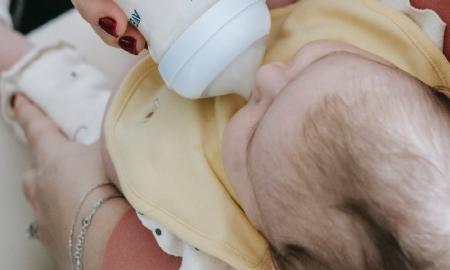10 tips to beat a DUI
Individuals are usually advised against drinking and driving due to the possible risk of getting involved in an accident which could cause significant harm to themselves or others. Also, drinking and driving is a serious crime and in violation of traffic rules and regulation in the United States.
On the other hand, you are presumed innocent until your guilt is proved by a prosecutor unquestionably, when accused of DWI or DUI.
You can avoid being charged with DUI using several techniques which are recognizing the legal defects or imperfections that can be used to convict any individual pertaining to the VC 23152. You can employ defense techniques such as police errors, BAC tests, wrong breathalyzer, health conditions and so on to avoid being charged with DUI, dismiss a DUI case or reduce the sentence of a DUI.
This makes having the best DUI defense lawyer that will ensure that any DUI case is dismissed through legal moves, arguments, and justifications without considering if your legal BAC limit has been exceeded, a necessity.
We have compiled a list of some techniques that can protect you and help you prevail over a DUI case even though there might be variations in every state.
1. Inaccuracy and errors in the breathalyzer test.
Breath tests related to DUI are the most popular blood alcohol concentration (BAC) test that is usually performed by experts on presumed culprits. But the truth is BAC is not directly evaluated by breathalyzers.
Rather, the breath alcohol is measured to calculate the BAC which is then multiplied by a partition ratio. The ratio of alcohol in an exhaled breath to that of alcohol presumed by a breathalyzer is 1:2100.
The estimated ratio of individuals that are tested range from 1:1300 to 1:3000 or even more which is based on other conditions such as body size, gender, breathing style, the ratio of red blood cells and body temperature.
Different conditions can bring about an inaccuracy in breathalyzer results which includes physical variations among drivers that can affect the partition ratio, the margin of error of the gadget, poor maintenance, and calibration or incorrect utilization by cops.
Specialist indicates that there is a margin of error between .005% and 0.02%, even when a BAC test related to DUI is flawlessly conducted. This is an opportunity for attorneys to question any perfect result.
2. Absence of any actionable reason for DUI charges.
A pulling over by the police is regarded as a seizure, according to the Fourth Amendment. There should definitely be actionable or tangible suspicions, before being pulled over by the police for DUI.
The popular reason drivers are being pulled over for DUI are drivers demonstrating driving disability traits, over speeding or disobeying traffic lights from the National Highway Traffic Safety Administration (NHTSA).
If there is no actionable reason or tangible suspicion for being pulled over by police, any unreasonable evidence can be reduced or eliminated by your DUI attorney by filing a lawsuit. The BAC test related to DUI from defendable evidence can be ruled out from the suppression or “1538.5 motion” apart from DUI sobriety checkpoints.
The possibilities of obtaining a DUI dismissal can be boosted by reducing the significance of any reasonable evidence because it is required by law that defendable or actionable evidence be provided.
3. Discrepancies in DUI blood test.
There are strict guidelines that must be met during blood testing for alcohol to ensure the reliability of results as blood tests are liable to generate incorrect results occasionally.
There are situations where blood samples will be left for many days before being evaluated, but the blood can decompose as a result of reactions with bacteria and enzymes since it is an organic substance. This decomposition process can ordinarily generate the presence of alcohol in the blood sample.
Based on the rate of fermentation, a BAC reading of 25 or higher can be generated from a typical blood sample. Fermentation takes place if a lab specialist does not appropriately refrigerate a blood sample or include the correct amount of preservative.
Although, the court usually deems the estimations from the blood samples provided by law enforcement correct which implies that the defense will have to put extra effort in proving this judgment wrong.
A significant method in contesting the accuracy of the blood test that was carried out is to file a motion on blood split such that the test will be carried out again, which will provide insights into how the blood and the BAC test was performed.
Popular conditions that can be employed to suppress the results of DUI blood tests are contamination, fermentation and inappropriate methods used in storing blood samples.
4. Charged with DUI without driving proof
There must be evidence of driving a vehicle before an individual can be charged with being intoxicated while driving.
Nonetheless, it is usually challenging for investigators to charge an individual with DUI without driving, especially when the car was involved in an accident, the absence of any witness that could testify that you drove the vehicle or you were discovered in a parked car by a police officer.
5. Inappropriate behavior or errors reported by the DUI police.
DUI charges can be dropped or the proof being disregarded if inappropriate behavior was filed against a police officer.
An individual case can also be dropped if the police officer does not adhere to the process of law, even if the individual is intoxicated while driving.
The DUI lawyer can drop the case using controlled, manufactured, illicitly acquired proof, providing a false statement in court by the police officer, or being in violation of the California Title 17 regulations.
6. Getting drunk unintentionally.
A DUI charge can be dismissed if the defendant was unknowing drugged by someone or consuming less obvious alcohol drinks.
This can, however, be done if one can fully guarantee of being intoxicated unknowingly, did not purposely consume alcoholic drinks or have even forgotten such happened.
7. Error in judgment.
This is another technique DUI lawyers employ in suppressing DUI charges or even dismissing a case.
Error in judgment can be indicated if there is an actionable reason that will accurately reveal that the individual was not under the influence of alcohol. For instance, if the defendant can truly show cogent reasons that the damaging effect from the prescription drugs have been neutralized.
8. Alcohol from breathing.
Many breathalyzers have revealed from research that it can’t effectively distinguish between ethanol (ethyl alcohol) and other chemical substances in the methyl group that could exist in the mouth.
A sample of breath with alveolar air is usually absorbed towards the deep end of the lungs by breathalyzers used for DUI tests. Nonetheless, the equipment can likewise catch the presence of alcohol in the mouth. This negatively affects the reliability of the results generated by the alcohol breathalyzer because a high BAC test reading can be untrue without the presence of ethanol in the body.
There are several conditions that can cause the presence of alcohol in the mouth, such as,oral drugs, Albuterol, a component in asthma inhaler, residues of foods soaked in alcohol from work performed by the teeth, oral herbal tinctures and breath spray or burping.
9. Incorrect sobriety test
The Standardized Field Sobriety Test (SFST) conducted in California does not properly signal disability.
The three SFSTs that can validate the reliability using genuine data are Walk and Turn (68% accuracy), Horizontal Gaze Nystagmus (77% accuracy) and One Leg Stand (65% accuracy).
Although, these outcomes are used for tests that are accurately conducted under perfect conditions which are usually not performed when DUI investigations are carried out by the police and as a matter of fact, any individual who had previously done a sobriety test can attest that it is difficult to pass even whilst sober. Not to mention at the roadside in the dead of the night.
Several factors can also result in test failures such as poor lighting condition or rough ground surface, non-athleticism or improper coordination, incorrectly or oversized clothes or shoes, feeling scared or nervous due to the presence of the police, poor balance or whirling and so on.
10. Necessity
A “necessity” legal defense will dismiss a case of DUI in California if a vehicle must be driven by the defendant to prevent a significant danger or in a crisis.
The 3403 criminal jury guidelines describe the procedures that can be discharged the accused from a DUI case if it was done during a crisis to avoid a major danger to others or themselves or perhaps there was an insufficient legal option than to drive.
Additionally, if there was no serious threat caused by the DUI, except the one prevented or the crisis did not originate from the defendant, a motion for the dismissal of the case can be filed by the DUI attorney.






